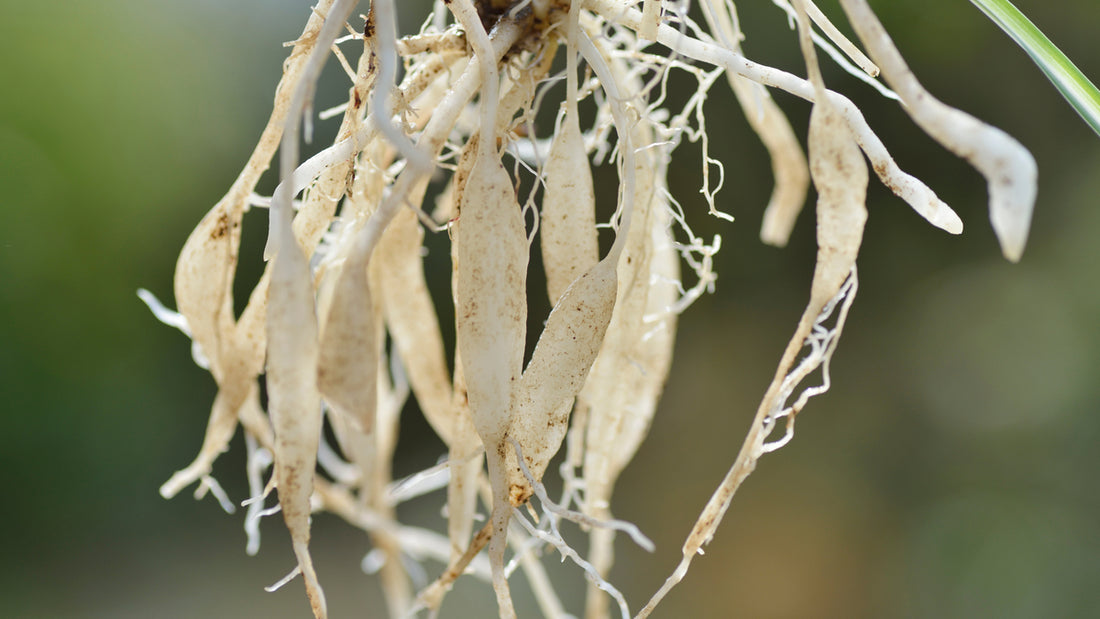
How to Avoid Root Rot When Water Propagating
**This post contains affiliate links. We may be paid a portion of any sales made via these links.
So you’ve snipped your first few cuttings and set them in water. They sit happily on your desk and everything is going great… Until one day you walk by and notice the stems are going brown and translucent. Uh-oh! Soft, yellow, or black stems bring bad news: root rot. How to fix it?
Instead of bright, strong new roots for your pothos or peperomia, your cutting has failed and is starting to decay. This happens as the water stagnates and bacteria in the jar overwhelms the plant.
So what can you do? (...besides subscribing to get future blog posts sent straight to your inbox.)
How to Fix Root Rot
If you can’t bear the thought of losing your babies, it may be possible to save the cutting by snipping off the rotten roots with sterile scissors (here's what I've used for years) and placing them in fresh water to try again. Just make sure you still have a viable node – a healthy green bump/bulge on the stem where new growth and roots emerge.
You can also dip rotting roots in diluted hydrogen peroxide to kill bacteria and fungus without harming your plant. For hydrogen peroxide of 3% strength, the ratio is 1:1 with water (6% strength is 1:2 with water). After diluting the solution, simply dip your roots in for 10 seconds then pop them back into the water.
How to Avoid Root Rot
The key to growing healthy, happy plants is to avoid root rot in the first place. Let’s look at some top tips for avoiding root rot when propagating your plants in water.
1. Change the water regularly – at least once per week to introduce fresh oxygen into the water
As your cutting grows, it will release carbon dioxide into the water and use up the oxygen. This can encourage bacteria growth so it can be helpful to replace the water regularly. Or simply top up as the water level drops to give your cuttings a healthy oxygen boost.
2. Don’t get the leaves wet!
Make sure no leaves are touching the water. If the plant has a crown – where leaves emerge from a central point – keep this above the waterline too. As a general rule of thumb, only stems should be submerged in the water as leaves and other parts are more susceptible to rotting.
Before we continue, this is one of our most popular blog posts! If you want notifications when we post new content, join other readers like you and be part of our email list. Sign up to never miss out!
3. Keep away from heat sources and strong light
Although it may sound obvious, a health check should include a check of your plant’s surroundings. If your propagation station is beside a radiator or is subject to powerful sunlight, it may be getting scorched. Warm water will cook up a nice batch of bacteria, creating a breeding ground for root rot.
Since most plants prefer “bright indirect light”, a north or west-facing window is ideal. If your windows are south or east-facing, try to set the propagation station back a few feet. Strong sunlight can encourage algae – green fuzz – to grow on your roots. Although this doesn’t always harm your plant, it doesn’t look too nice.
Do your plants need some extra light? Mine LOVE this grow light!
Happy, Healthy Plants
Following our three easy pointers will help you to avoid root rot as you grow your cuttings in water, nurturing happy and healthy plants.
Happy growing!
What's Next?
Exercise your patience propagating this favorite, slow-growing plant
Try your hand at propagating these happy little prolific plant babies
Start your propagation journey with our featured propagation vases
